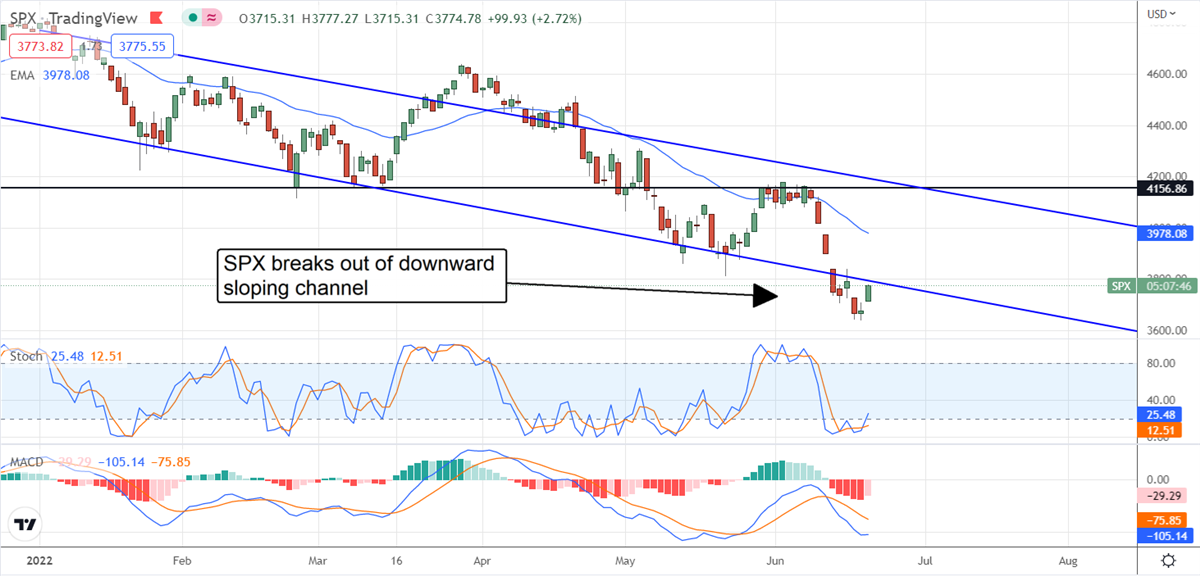There’s Hope In The Market But The Technical Outlook Is Gloomy
Equities began the week with a strong bounce and the S&P 500 (NYMARKET:SPY) gained more than 2.6% by midday. As strong as the bounce looks, however, we still don’t think this is the buyable bottom. While there is some indication that a bottom may form during the Q2 reporting season that season is still a few weeks away and there is great risk in the outlook. The consensus estimates for Q2, Q3, and Q4 earnings have ticked higher over the last two weeks the updraft is tepid and almost 100% due to the energy sector.
Q1 2022 hedge fund letters, conferences and more
If we’ve said it once, we’ve said a dozen times that higher oil prices in the face of rising demand are driving windfall profits in the energy sector that should be sustained into calendar 2023 at least. The fundamental picture in the energy sector is dwindling capacity and supply and that can only lead to higher prices. The takeaway is the energy sector should do well this year and the better they do the worse it is for every other sector.
The S&P 500 Broke Out Of A Downward Sloping Channel
We’ve been tracking several technical conditions in the S&P 500 that suggest a downward bias in price action if not a continuation of the downtrend that began earlier this year. The major pattern that is dominating the price action is a Head & Shoulders Reversal that should take the S&P 500 down to the 3480 level and it is still well above there. The most recent pattern we’ve been tracking is a downward sloping channel that demarcates the downtrend that began at the end of 2021/beginning of 2022. That channel should take the price down to our 3,480 price target on its own but the price action broke out of this channel to the downside. In this scenario, we see the S&P 500 decline accelerating, not reversing, and moving quickly down to the 3,480 level if not surpassing it.
The risk for the market lies in the Q2 earnings and there is a large amount of risk. There is a chance the season will come in better than expected (which is the most likely scenario based on historical evidence) and that should put a bottom in the market. The question that will need to be answered then is what kind of bottom is it? If the outlook for the second half of the year brightens, even a little, it may be a permanent bottom that leads to higher prices for the S&P 500. If, however, inflation remains a problem, the FOMC stays uber-aggressive, and the outlook for earnings ex-energy sector darkens the downtrend will continue.
The Analysts And The Gurus Aren’t Sanguine About The Market
A look at the Marketbeat.com daily analysts' coverage is telling. While some companies, particularly in the consumer staples sectors, not to mention the energy companies, are getting upgrades and price target increases the bulk of analyst activity is negative. The takeaway is the analysts still see an upward bias for the market but their sentiment is slipping and that is a weak foundation for the market.
There are other influential names giving gloomy forecasts as well. So far, we’ve seen Wharton professor Jeremy Seigel, JPMorgan Chase CEO Jamie Dimon, bond-guru Mohamed El-Erian, and even Jim Cramer give dire forecasts for stocks and the economy. The takeaway here is that fear of a major recession is growing and it’s time to be frugal with cash. As for the minor recession? It’s already here.
Article by Thomas Hughes, MarketBeat






